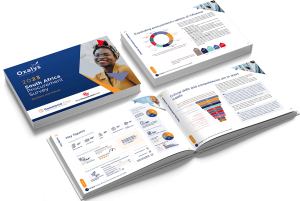Organisations that do not use an automated travel and entertainment (T&E) expense management service are falling behind in almost every measure of financial management. These organisations as ‘laggards’ and presents figures showing that they pay 37% more to process their expense reports; they take three times longer to reimburse employees; and they are essentially working in the dark when it comes to controlling travel expenditures according to a 2008 report by researcher Aberdeen.
Aberdeen also estimates that almost one of every five T&E expenses submitted at these organisations are in direct violation of corporate policy.
For most organisations that depend on T&E to generate new business and manage its operations, managing these expenses are a major challenge. These challenges include:
“It seems that business risk managers tend to sacrifice efficiency for control. These organisational policies typically direct the employee to utilise their own funds and claim back from the organisation”, Julian Curtiss, Managing Director of Transaction Technology Solutions, told SmartProcurement. This benefits the organisation in two ways:
- The policy ensures that the organisation only reimburses expenses it approves and as such disciplines the employee to be more circumspect about their spend. This process therefore assists with control and compliance.
- The employees ensure the timely and speedy return of documents to the organisation, which, in turn, assists with control.
On the downside manual policies actually create and contribute to the challenges mentioned by Aberdeen. For example:
1. Lack of access to sufficient T&E data: In all cases, these policies result in the manual processing of data through the organisation. The irony is that at the point of origin, i.e. the transaction, the data is electronic. From that point onwards the data is handled manually right up to the point where it is captured into the General Ledger (GL) by some overworked and underpaid accounts payable / finance clerk. Due to the volume of data, this data is usually captured at a low level of detail and hence analysis of the data is almost impossible.
2. Enforcing compliance of T&E policies:
- Most manual expense management processes rely heavily on the authorising manager to check the employee’s claim to ensure policy has been adhered to. Most authorising managers will be aware of the obvious non-compliant spend such as hotel valet services, mini-bar use and in-room dining and movies, and will thus check for these. Generally though approval of these is also left to the discretion of the authorising manager as there may be circumstances where these can be allowed. As a result, once the claim makes it past the authorising manager there is often very little secondary checking done, and this leaves the policy open to abuse and fraud.
- Furthermore, whilst authorising managers are generally kept up to date with the organisation’s T&E policies, they may not be kept up to date with the organisation’s sourcing policies. As a result authorising managers may often sign-off on non-compliant spend without being aware of it. A common example is where an organisation’s travel office books the employee into a contracted hotel where-upon the employee cancels this booking and changes it to a property of their own choice, at the same or lesser rate. The employee and the authorising manager are unaware that this may impact on the rebate the organisation is hoping to receive from the contracted hotel group. In an actual case study conducted by Transaction Technology Solutions, an organisation was ‘leaking’ 82% of its hotel spend. Furthermore, this information is only discovered following an extensive and costly manual analysis of thousands of expense claims.
3. Cost of administration: Few organisations realise the overall process cost of manual expense reports. Studies done by the Aberdeen Group indicate that on average it costs R420 and can take up to 14 days to process an expense report manually. More importantly it takes on average 35 minutes of an employee’s time to complete a manual expense claim. Given that most of these employees are at the higher end of the pay-scales, this contributes greatly to the overall process cost. What the Aberdeen Report fails to highlight is that the 14 days taken from “submission to reimbursement” do not take into account the time from “origination to submission”. All manual expense reporting processes generally kick-off with the receipt by the employee of their bank/card statement, which is often one of the documents required by the employer to ensure proof of payment. This can add an additional 30 days to the cycle and can result in the GL being, on average, 45 days out of date.
4. Accuracy of T&E data: Most organisations insist on the employee utilising their own funds or credit cards because the organisation does not trust the employee to be responsible for a company credit card. The irony is that the organisation relies on the data originating from the employees’ systems to manage its own expense information. The challenge this presents is that individual bank and credit card statements are notoriously short of description and therefore the organisation must now trust the employee to be truthful about what the item relates to. This, when 86% of the organisations polled effectively stated that they did not trust their employees.
“It should be made clear that those organisations that depend on reimbursive, manual T&E policies are operating under an illusion of control. It is an illusion because the systems that are put in place to deliver this control actually contribute to its absence. The only way to gain control over T&E expenditure is the implementation of data and workflow systems that deliver detailed reporting information back to the organisation for management and analysis. Further studies done by the Aberdeen Group in 2008 show that 79% of organisations believe Corporate Card Programs are essential to the competent management of T&E expenses. Furthermore, 73% believed that a formal e
xpense management solution was essential, whilst 68% believed that a travel data reporting system was essential”, Curtiss explained.
Apart from directly addressing the challenges raised in Figure 1, expense management automation contributes directly to enabling the elimination of fruitless and wasteful expenditure, whilst contributing to increased efficiency in the expense management process. Organisations polled by Transaction Technology Solutions reported savings of between 15% and 32% in T&E spend through the implementation of expense management automation, and increases in compliance of between 4% and 78%.
The relatively low 4% and 5% increase in compliance in air and car rental respectively is a result of the already high compliance to policy as a result of the use of Travel Management Companies. The massive 78% increase was as a result of the increased capability of the respondent organisations to police and drive compliance due to increased availability of management information. Offending employees are identified within 48 hours of the execution of unauthorised or non-compliant spend. Thereafter ‘soft’ controls come into effect with offending employees spreading the word and causing a ‘wave of compliance’ among other employees. This results in rapid changes in behaviour and therefore the rapid delivery of benefit.
Aberdeen research, corroborated by Transaction Technology Solutions, also indicates a significant improvement in expense reporting cycle times and costs.
With web-based automated expense management the employee can address items within 48 hours of origination, wherever they happen to be, thereby reducing the ‘origination to GL update’ cycle time from an average of 45 days to 72 hours. This results in dramatic changes to the accuracy of the organisation’s GL which informs not only financial reporting but Treasury efficiency as well. Expense claims no longer ambush the Treasury, thus improving fund management.
The benefits of expense management automation can best be summarised as follows:
- Improves access to T&E data;
- Improves compliance to T&E policies;
- Reduces the cost of processing T&E expense reports;
- Improves reconciliation between travel booking and expense management;
- Increases the accuracy of T&E data; and
- Improves Treasury efficiency.
“There can be no doubt that a Corporate Card Program, combined with a web-based data management solution, provides the quickest, most cost-effective means to achieve control, cost savings and transparency for the organisation’s T&E expenditure. In the current economic climate implementing an automated expense management solution should be a priority for every organisation”, Curtiss concluded.
References:
- Best Practices in Expense Management Automation – Aberdeen Group 2003.
- Travel and Entertainment Expense Management Report – Aberdeen Group 2006.
- T&E Expense Management Report – Aberdeen Group 2008.
Article submitted by Julian Curtiss, Managing Director of Transaction Technology Solutions.
Julian Curtiss can be contacted at the details below:
Tel: +27 83 413 5737
E-Mail: Julian@curtiss.co.za

























